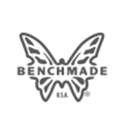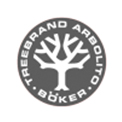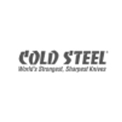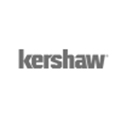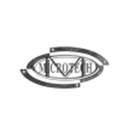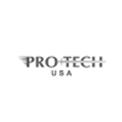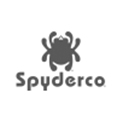What’s the Best Spyderco Knife for You: A Guide
30th Nov 2020
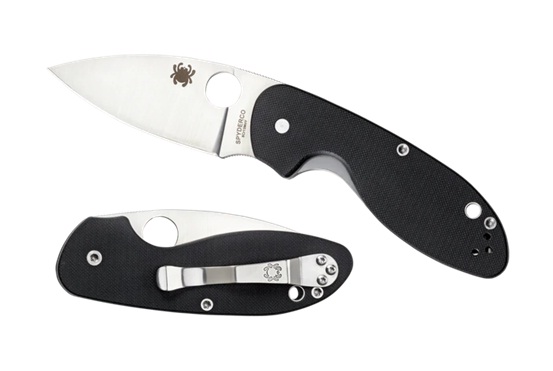
Choosing the best Spyderco knife is like choosing the best book. Exactly, even given your preferences in reading (whatever they are) you don’t even know where to start.
Words like “best” and “worst” are so subjective that there’s almost no point in bringing them up. Still, there are enough people out there looking for the best “this, that and the other thing” that we figured we’d pitch our two cents into the matter.
Still, we’re not going to give a list of best and worst knives to choose from. We’re going to do better.
In this article, we’re going to set a framework that you can follow to choose a Spyderco knife based on its individual merits. In that way, you’ll be able to pick out the best Spyderco knife for you, whether you're an LEO, a camper, a hunter, or a chef; so let’s get started.
Preliminary Considerations
Before you can even begin to define a discipline, you should take a look at some of these preliminary considerations that will impact the fitness of a knife, Spyderco or otherwise. These are some of the questions you should ask and square away before you even get onto shopping for a model based on how you’re going to use it.
-Fixed vs. Folding
The age old debate of fixed versus folding continues, and there are stubborn adherents on both sides of the line who simply won’t budge, based on principle. Let’s lay principle aside for a moment and admit the honest truth - there are useful knives in both fixed and folding sides of the debate.
Modern technology and advances in locking mechanisms have produced some truly high quality folding knives, and the fact that you don’t need a sheath to carry one is a bonus that has made them immensely popular in recent years. By recent, by the way, we mean the past thirty or forty. Folding knives are convenient, quick to deploy, and can be used for a wide variety of cutting tasks.
Fixed blades, by contrast, though they do require a sheath, are inherently stronger than even the best of the best folders. You can use a folder for most tasks for which you can use a folder. The operative word there is most, and it should be stressed. You should never use a folder for batoning, chopping, or other heavy duty tasks.
-Locking mechanism
If you’re going to go with a folding knife, it’s important to pick a locking mechanism that works for you. Most if not all Spyderco knives that you’ll find here are going to have one of two types of locking mechanisms. These are either a lockback or a linerlock, though some Spyderco knives also feature a variant of the linkerlock known as a framelock. For all intents and purposes, however, these latter two are the same. (It’s also important to note that Spyderco uses some proprietary variants of lockbacks, such as Compression locks and Backlocks, among others. These have the same general strengths as a lockback, however)
The importance of a quality locking mechanism cannot be understated, and if you’re going to use a folder for any heavy use, you need a strong one. You just can’t risk using a folding knife when there is an inherent danger that the blade will fold on your hand.
-Blade size and profile
Blade size and profile are also important considerations to determine well in advance of shopping for an actual model. Size is subjective, and you need to determine that for yourself. Do you want a three in folder for EDC or a 5 inch fixed blade for hiking or camping? That’s on you.
As far as profile, this will impact a blade’s utility for a given chance. Some of the most popular (and very generalized) profiles in knives are clip points, drop points and spear points. One of the interesting things about Spyderco is that a vast majority of their knives do not follow these age old conventions.
Spyderco predominantly creates knives (especially folding knives) with what some call a leaf shaped blade that has excellent ergonomics, plenty of belly as well as strength near the tip. Many of them maintain a fine tip point that is still excellent for detail work.
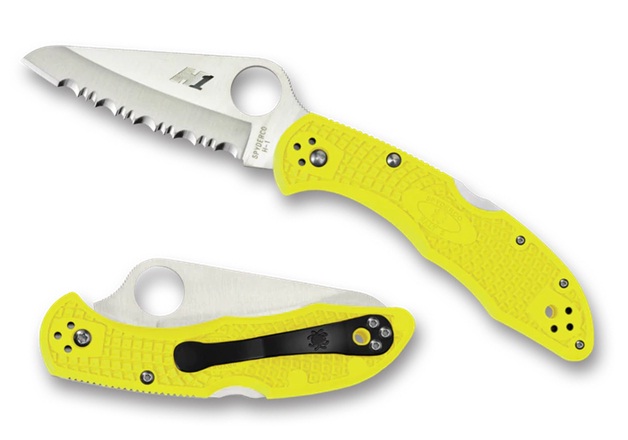
Instead of calling it a leaf-shaped blade, we’ll call it a modified Sheepsfoot blade. While these knives are not blunted or rounded near the point, they still have a lot of spine that slopes gracefully forward. This gives them excellent piercing and cutting ability while retaining a lot of strength.
-Grind
There are tons of grinds out there, and each of them has its own unique set of strengths. There are Scandi grinds (also known as half-flat grinds) saber grinds, convex or axe grinds, hollow grinds, and many others. Hollow grinds, for example, are typically reserved for razors, although some producers of hunting and other meat-processing knives, like Buck, hollow grind many of their blades. However, these grinds can create a more fragile edge that is more prone to chipping because there is less mass of steel behind them.
By contrast, the axe or convex grind is predominantly reserved for tools and axes, as well as some heavy-camp knives and machetes. Because there is a lot of steel behind the bevel, this type of grind is very strong and stands up well to hard use and abuse. It is unlikely to chip and more likely to deform because it has so much structural integrity.
Spyderco actually uses a different grind that has not been mentioned yet, and one that nicely pairs the strengths of the two grinds mentioned at length above without falling prey to their weaknesses.
Many Spyderco knives, most even, use a full-flat grind that starts at the spine and drops to the bevel. This type of grind is very strong, easy to resharpen, and can produce blades that are useful for everything from processing meat to working wood. It produces a fairly strong edge as well.
-Steel type
The type of steel you choose in your Spyderco knife is also important. As a general rule, the more carbon in a steel alloy, the harder it can be made through a proper heat treatment. The common addition of elements like Vanadium and Molybdenum makes the steel not only denser but much tougher.
Several of the stronger blade steels that Spyderco uses in the production of its knives are VG-10, 8Cr13MoV steel and S30V although there are many others. VG-10, for example, is very tough, and S30V can be made extremely hard which gives it great edge retention.
As a general rule, you’ll want to look for three things in a knife. Hardness (for edge retention), toughness (to stand up to torque and abuse) and corrosion resistance (so it won’t rust away on you) make up the trinity of knife steel attributes. There was a time where critics would claim you could get two of the three in the same steel, but modern alloys, like some of those mentioned above, have a good balance of all three.
Uses
Hopefully by now you have a pretty good impression of what you want to look for in the best Spyderco knife and what engenders quality. Now you can get onto defining your chief intent and purpose for the purchase of this new knife.
Here are some of the main disciplines that people who carry knives practice. Take each of the suggestions into account.
●Everyday Carry (EDC) - We can’t tell you what to look for in an EDC pocket knife design, but we can give you a few pointers as to what makes a good knife. For one thing, an EDC knife, since it will be on you every day, is going to get beaten up a lot. It’s not going to get beaten up in the way that a camp knife is, but it’s going to get dropped, dinged, nicked and hit. You might drop in into the sink or the lake or the bay or into the bottom of an engine bay. You’re also going to use it to do everything from opening bottles and envelopes to carving feather sticks. It also might not get the best care, since you’ll just have it in your pocket all the time.
The point is, an EDC knife gets used roughly, so a good balance of edge retention, toughness and corrosion resistance is a must. Also, just our two cents - smaller is better in an EDC knife, as they stand up well to the prying and other things you’re not supposed to use pocket knives for but invariably will. Also, there’s less edge to sharpen and you’ll need to do that a lot. Get something tough, that opens and closes easily, with a strong lock and tough scales (like a G-10 handle) and you’ll be set.
●Shop Utility
Many of the same things that make a quality EDC knife also make a quality shop knife. You’ll want something that allows for easy one handed opening, preferably a folding knife in this case (with a pocket clip) so you can keep it anywhere on you for easy access. Toughness and edge retention are, in this category, more important than resistance to corrosion.
●Hunting and Fishing
Since the main goal of a knife for hunting and fishing is to clean and process fish and game, toughness isn’t so much of an issue. Edge retention and resistance to corrosion, however, are very important.
For example, Spyderco produces knives like the Spyderco Salt 2 in H1 steel, wherein the nitrogen replaces the carbon in the alloy. This makes it naturally hard and also effectively impervious to rust. It isn’t much use for fileting, but the fully serrated blade is tops for bait prep and handling.
That’s just one example, so don’t take it as gospel, because you might want something closer to a filet knife or a skinner, and many of Spyderco’s other knives are better suited for those things. Just keep your eyes open for a well-heat treated blade that offers some decent corrosion resistance - fixed or folding - because Spyderco offers a lot in this arena.
●Camping, Survival and Bushcraft
You can still carry a folding knife when you’re camping or building bush furniture, but here, fixed is best. In these types of situations more than any others, you need a good balance of corrosion resistance, toughness and edge retention. If you’re really in the field for a prolonged period of time, you need a blade that will stay sharp, won’t bend, break or chip, and won’t collapse into a puff of dust at the slightest provocation.
Knives like Spyderco’s Province fixed blade with G-10 scales and a CPM-4V blade are well designed for bushcraft and camping and are not only incredibly tough and strong but nearly impervious to the elements. A knife like this is one you’ll want to carry around camp, especially if words like “splitting” ever get tossed around.

●Tactical Use
Spyderco also produces extremely popular tactical tools like the Paramilitary 2 and Spyderco Para 3, for which we won’t provide links because there are so many different models and features among them. With advanced ergonomics, and carry options as well as easy, fluid one handed opening via Spyderco’s immediately recognizable thumb holes, and many other features, these are very popular tactical knives.
●Culinary Applications
Yes, Spyderco even makes knives for the kitchen, and if you’re a chef looking for the best Spyderco knife, none of the above categories is going to suit you well. You’re best off sticking with the models that Spyderco has designed for culinary applications, like their Spyderco Z-Cut or Paring Knives, which are ergonomically and professionally designed to serve better in the kitchen than in the field.
Closing Thoughts
By now you should have an impression of what you need from a knife. If you do, you can get onto picking out the best Spyderco knife for you - just visit our collection of Spyderco knives and products to get to it.
If a Spyderco isn’t for you, and you need something more along the lines of the utility of a multi-tool, check out our recent guide on How to Pick out a Leatherman Pocket Knife to see if there’s something in there more useful for you. There’s something in our diverse collection of brands for everyone.
In the event you need more help, get in touch with us at WhiteMountainKnives@gmail.com and we’d be more than happy to help you choose the best Spydero for you.

